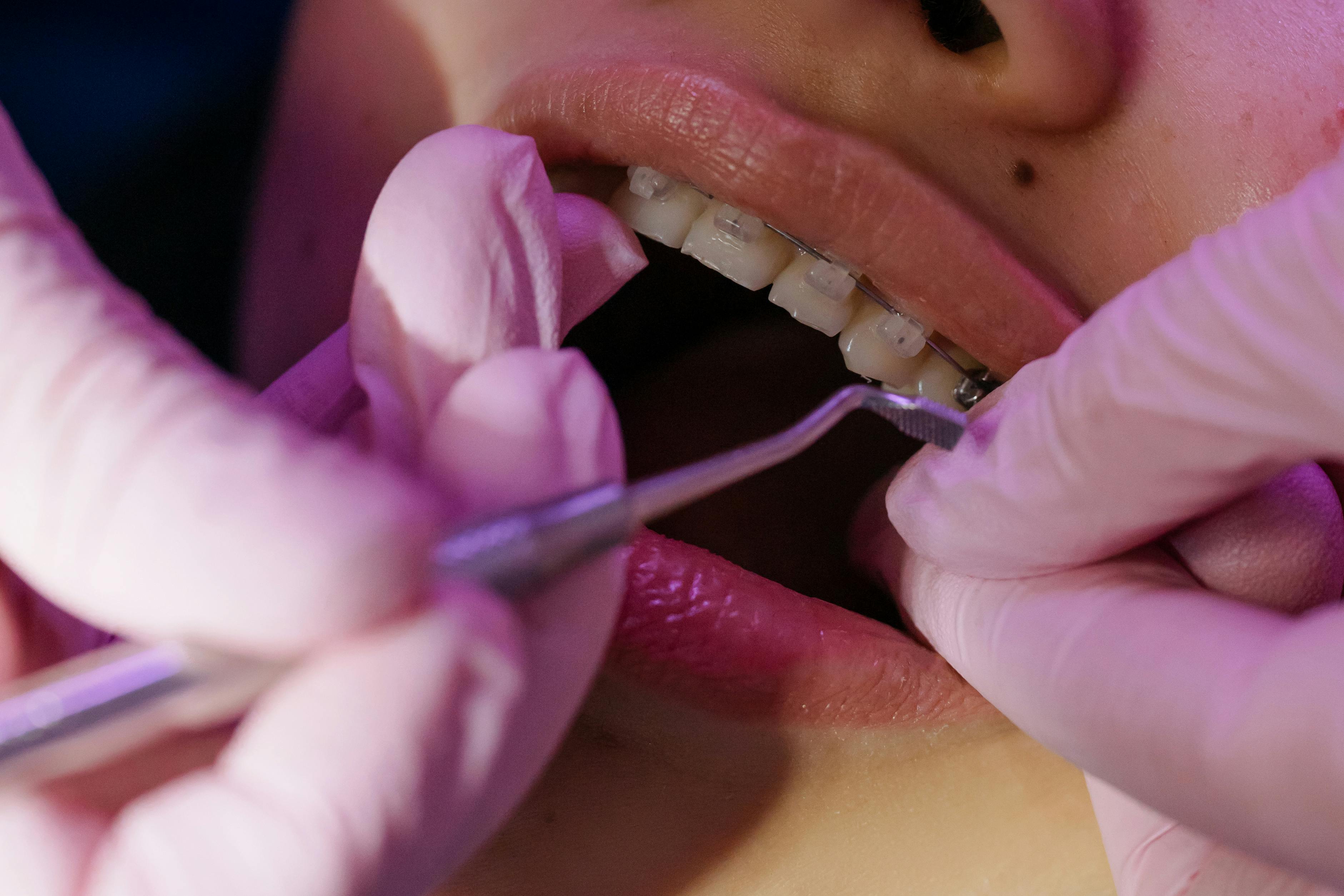Braces are a popular orthodontic treatment used to straighten teeth, improve bite alignment, and enhance overall oral health. They consist of various components that work together to move teeth into their ideal positions. To better understand how braces function, it’s helpful to look at a braces diagram that highlights the key elements of the appliance.
At Ceceilia M. Markham, DMD in Warrington, PA, we believe that understanding the mechanics of braces can make the treatment process easier and more transparent. In this article, we will provide a detailed description of each component of braces and explain how they work together to give you a beautiful, functional smile.

What Are Braces?
Braces are orthodontic devices designed to straighten teeth, fix bite issues, and improve oral health. They are typically composed of brackets, archwires, rubber bands (ligatures), and other components. Braces apply gentle pressure over time to move teeth into their proper positions, and they are commonly used by both teenagers and adults.
Key Components of Braces: A Braces Diagram Breakdown
A standard braces system includes several parts, each with a specific function. These components include:
Brackets (Metal or Ceramic)
The brackets are small squares or rectangular pieces that are attached to each tooth. They are the central components of the braces and serve as anchors for the other components. Brackets are made from metal, ceramic, or clear materials.
- Metal brackets: These are the most common and durable option.
- Ceramic brackets: These are tooth-colored and blend in with the natural color of the teeth, offering a more discreet look.
- Self-ligating brackets: These brackets use a built-in mechanism to hold the wire in place, eliminating the need for elastic ties or ligatures.
Function: The brackets are bonded to the front of each tooth using a strong dental adhesive. They serve as the main anchor point for the archwire and help guide the movement of the teeth.
Archwire
The archwire is the thin, flexible wire that runs through the brackets and connects them. The archwire is responsible for applying pressure to the teeth, which helps them move into the desired position over time.
- Material: Archwires are usually made from stainless steel or nickel-titanium (NiTi), which are both flexible and strong.
- Shape and adjustment: The wire is initially shaped to match the natural arc of your teeth, but as treatment progresses, it may be adjusted to gradually guide the teeth into better alignment.
Function: The archwire is the key element that exerts pressure on the teeth. It is held in place by ligature ties or clips and is responsible for moving the teeth in a controlled and gradual manner.
- Ligature Ties (Elastic Bands or Metal Ties)
Ligature ties are small rubber bands or metal wires that secure the archwire to the brackets. The rubber bands come in a variety of colors, allowing for customization and a fun, personal touch.
- Elastic ligatures: These are the most common and are available in a wide range of colors.
- Metal ligatures: Some braces use small metal wires that wrap around the brackets to hold the archwire in place.
Function: The ligature ties help keep the archwire securely attached to the brackets, ensuring that the braces work efficiently to move the teeth. They can be changed during regular appointments.
Bands
Bands are metal rings that are placed around the molars, securing the brackets to the back teeth. While not used on every tooth, bands are particularly important for molars because they need additional support to handle the pressure placed on them.
- Material: These are typically made from stainless steel or titanium and are custom fitted to each tooth.
- Function: Bands provide additional support and stability for the archwire, especially in the back of the mouth where the molars are.
- Elastics (Rubber Bands)
Elastics are small rubber bands that are used to apply additional pressure to specific areas of the mouth. These rubber bands can be attached to hooks on the brackets to help correct bite issues, such as overbites, underbites, or crossbites. They may be worn at all times or only during certain hours, depending on your treatment plan.
- Function: The elastics help adjust the alignment of the bite by applying extra pressure to the upper and lower jaws.
Spacers (Separators)
Spacers are small rubber or metal rings that are temporarily placed between the molars to create space for the bands. These are often used at the beginning of treatment to prepare for band placement.
- Function: Spacers gently move the molars apart to allow the placement of bands without discomfort.
Headgear
Headgear is an optional orthodontic device that may be used in more complex cases to apply pressure to the upper or lower jaw. It is typically worn outside the mouth and attached to the braces with straps and a facebow.
- Function: Headgear can be used to correct bite issues or jaw alignment problems by applying additional pressure to specific areas of the mouth.
How Braces Work Together to Straighten Teeth
The process of moving teeth with braces involves constant pressure, which is applied through the different components. Here’s how the process typically works:
- Brackets and archwires: The brackets are bonded to each tooth, and the archwire is threaded through them. The archwire provides the main force that gradually shifts the teeth into their desired positions.
- Ligature ties and bands: The ligature ties (elastic bands or metal ties) hold the archwire in place. As the wire moves, so do the brackets, which are attached to each tooth. The bands around the molars give extra support to the braces, particularly for more complex movements.
- Elastics: Rubber bands are used to apply additional pressure to specific areas of the mouth. They help align the upper and lower jaws to correct bite issues.
- Adjustments: Throughout your treatment, your orthodontist will make adjustments to the archwire to continue the process of tooth movement. Each adjustment allows your teeth to move gradually into their ideal positions.
Your Path to a Perfect Smile
Braces may seem complex, but when you break them down into their individual components, they become a well-organized system designed to improve your smile. Each part — whether it’s the brackets, archwire, ligature ties, or elastics — works together to achieve the best possible results. With the right care and regular adjustments, your braces will help you reach your orthodontic goals.
If you’re ready to start your orthodontic journey and explore how braces can transform your smile, contact Ceceilia M. Markham, DMD in Warrington, PA, today. Our team is here to guide you every step of the way!
Visit Our Office
Office Hours
- MON9:45 am - 5:30 pm
- TUE9:00 am - 5:00 pm
- WED9:45 am - 6:15 pm
- THUBy appointments only
- FRI9:45 am - 5:00 pm
- SAT8:45 am - 1:00 pm
- SUNClosed
